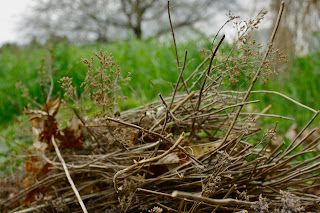Below is a brief discussion between Julia Ostertag and Coyote & Raven (Peter Cole & Pat O'Riley) about what types of discussions need to be brought into our Outdoor Classroom project.
narrativity, Indigeneity, social justice, environmental justice
also garden design materials soils drainage
the small creatures that are parts of our gardens
native plants companion planting diffierent
kinds of gardens the effects of 'alien' or 'invasive'
speciies on native ones
at the same time that agriculture canada limits the import
of the thousands of varieties of vegetables that are native to
this hemisphere including some that would be suitable for growing
in the lower mainland we are still very much limited in terms of varieties
including in potatoes corn squash because of commercial
interests trumping individual/noncommercial interests [which
is the overwhelming majority] fear of blights and smuts and rusts
[on another note I like too the idea of the outdoor kitchen
at the ubc farm the strawbale construction the adobe
oven even making your own ceramic pots and various
ways of constructing and firing them though not for this short class]
I wonder if you know of the iseli nursery in boring oregon
my brother in law who is a horticulturalist in se bc
at a large tree nursery told me about it - I'd love
to go and visit it some time it has a really good
reputation in the nursery industry people who love plants
kukwstum'c
pc
**********************************************************
These are exactly the difficult questions of how we engage in placing ourselves within landscapes. For instance, at our last group meeting, we discussed how we want to work the soil. Until now, all the work has been done by hand but a proposal had been put forward to rototill. After group discussion, we decided to maintain the human-powered aspect of the site, largely for philosophical reasons.
The challenge is for us to bring these conversations with us in our everyday practices as learners, teachers, gardeners. Not always easy. There's an ongoing sense of urgency driving our human activities, which means we often forget or over-ride other important considerations. The spring push to plant meant that collaborative processes of design were neglected: "The soil needs to be worked" was a common refrain. I'm curious what the soil "really" thinks, when we speak on its behalf in this way.
Raining again. We're heading to the farm this afternoon to bake at the bread oven :)
Cheers,
Julia
***************************************************************
when I was speaking with one of the mayan people who work the gardens atthe graduate indigenous conference he said they didn't use any tools just
their hands
I dug the earth from about the age of 4 or 5 with a shovel or garden fork and of
course on my hands and knees (the way one enters a sweat lodge)
to get the rocks and weeds out very often working from the early morning
until after dark sometimes even a few hours into the dark in the spring and fall
- my parents were against the use of rototillers powered lawn mowers it was
labour intensive ... it was only the hand tools that came from the owners of the
means of product shovels hoes rakes augers picks edgers hedge clippers
pruners weeders but then again we had a coal and wood stove for heat and baking
and we pumped our water from a well at home used an outhouse toilet allseason
and only had candles and/or coal oil lanters/lamps for light a lovely light to read by
some stayed with the non fossil fuel technologies some embraced the motored newcomers
but not chez nous though we did get an electric lawn mower eventually it was
like a helpful intruder
when I had my own landscaping and gardening company we bought
power equipment to augment our hand tools I always appreciated the feel and
smell and scent of the earth it's humbling to be close to the earth but in a business
the motorized machines sure cut down the prep time though they were not good
for weeding they just cut up the rhizomes which propagated them even more
it's lovely to see how much life there is in the soil and close to it the spirit of
food nourishes us the spirit of the soil nourishes the plants
pc






























